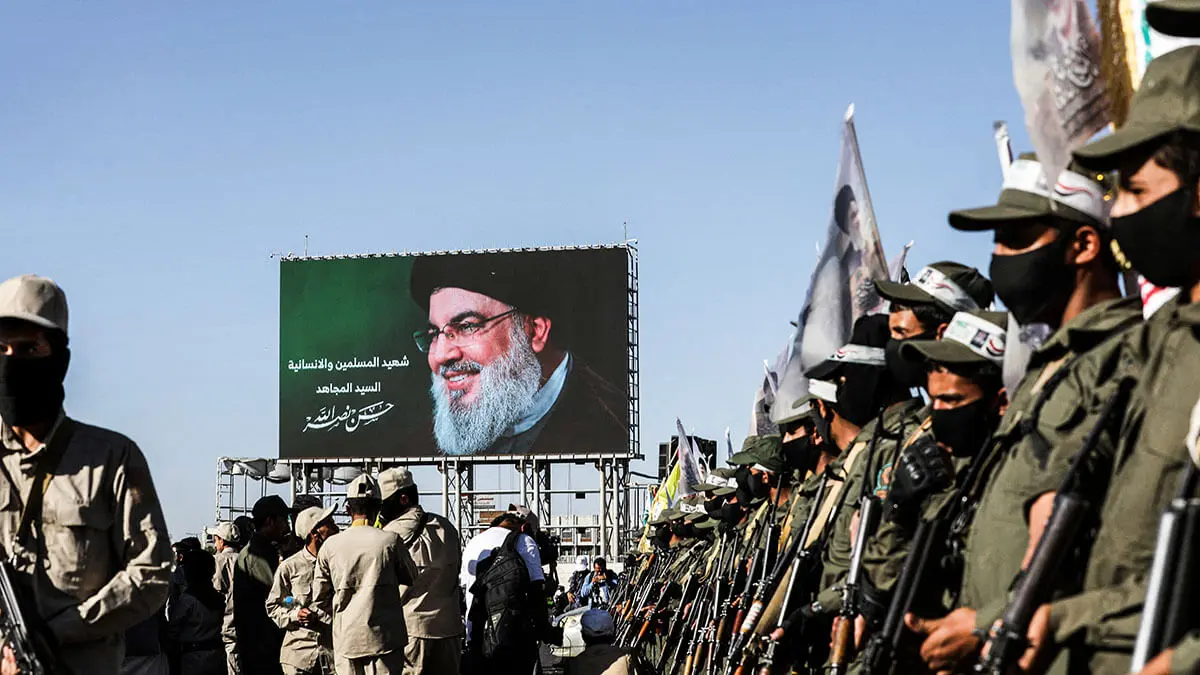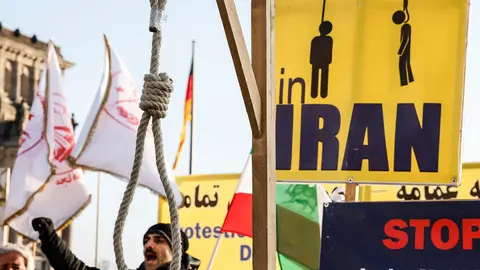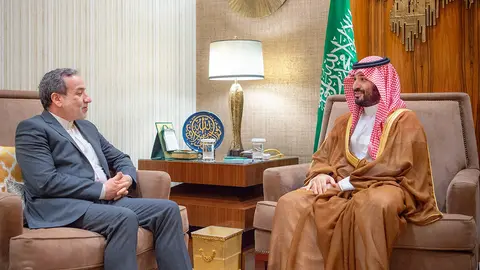Iran’s fading proxy belt

Without a doubt, all the regional disasters we are witnessing today are linked, in one way or another, to the 1980 outbreak of the Iraq-Iran war and it subsequent ripple effects.
What began as a sectarian alliance that guards Iranian interests and takes part in fights on behalf of Tehran, has become an alliance of burdens borne by the Supreme Leader, the Revolutionary Guard, and all of Iran.
After the Iran-Iraq war, there were many versions of how that war erupted. Iraq said at the time that Iranian provocations on its border preceded the massive response by the Iraqi army on September 22, 1980.
Although the then Iranian leadership, and that of today, has accused Iraq of being responsible for the war, testimonies and reports from that period indicate that some “unruly” elements from the Iranian revolutionary forces struck the Iraqi border posts with artillery, mortars and heavy machine guns, without prior knowledge or permission from the Iranian leadership.
There is no doubt that the Iranians’ attempt to evade official responsibility for the war does not take into account Tehran’s declared intent to export its revolution nor the violations committed by Iranian warplanes in the weeks preceding the outbreak of the war. The Iranians have also failed to explain how “unruly” revolutionary elements could lay their hands on field artillery or mortars and use them against Iraqi border guards without Iranian leaders preventing them from doing so.
What followed is well documented. Iran found itself in an open war with Iraq that lasted eight years. Whether or not those “unruly” elements were acting on the orders of the high religious leadership in Tehran and Qom of the time, Iran ended up paying the price. Without a doubt, all the regional disasters we are witnessing today are linked, in one way or another, to the outbreak of that Iraq-Iran war and it subsequent ripple effects.
There is some similarity between that initial episode and what is happening today, with the war which started in Gaza extending to Lebanon and likely to expand regionally to Syria, Iraq and Yemen, and then eventually reach Iran itself. When Hamas launched Operation “Al-Aqsa Flood”, Iranians denied any responsibility in the fateful decision.
Just as we could not figure out how heavy weapons ended up in the hands of unruly elements of the Revolutionary Guard in 1980, we have never received an explanation from Iran as to how Iranian missiles and drones landed in the hands of “unruly” elements in Hamas to be eventually used by Yahya Sinwar, Iran’s rising figure who held power in his grip in Gaza. If Hamas was out of control and acted on its own volition, could this kind of behaviour reoccur with Hezbollah, the most rigorously-organised and tightly-disciplined force among all Iran’s proxy militias? Was it able to decide alone to take part in the cross-border showdown with Israel a day after the “Al-Aqsa Flood” unfolded to carry out Iran’s “unity of battlefields” strategy?
This strategy has been reflected with commitment and discipline in the actions of some geographically distant parties, namely Iraq’s Popular Mobilisation Forces (PMF) and Yemen’s Houthis. The notion of an unruly Hezbollah acting on its own with Hassan Nasrallah calling the shots is however hardly credible.
Iran suffered a high human and economic toll from the Iraq-Iran war. Perhaps the first lesson the Iranian leadership learned from that conflict is that it would no longer fight directly, and that it must set up an armed human belt composed of sectarian-based loyalist groups which would fight on its behalf.
Hezbollah walked this path early on. It arose to play this role in the course of the Iraq-Iran war, along with the Badr Forces and the Iraqi Revolutionary Council that fought against its own country on the side of Iran. Iraq’s strategic defeat in the Kuwait War opened the door to investing in social discontent as represented by a number of Shia forces, such as in Bahrain, and by other semi-Shia factions, such as the Zaidi Houthis in Yemen.
With the fall of Baghdad and the collapse of Saddam Hussein’s regime, Iran seized on the golden opportunity offered by Arab withdrawal from Iraq and the confusion of the American occupation forces. It set up a sectarian power base that today is most important because of the human and material capabilities that Iraq possesses.
Iran successfully tested its sectarian belt of proxies in Iraq, Syria and Yemen. It had become more confident in Hezbollah’s capabilities after the group took control of Lebanon in 2008. Hezbollah impressed Tehran with the role it played in the Syrian civil war when it fought alongside the Assad regime. There was no reason be alarmed by Israel’s occasional attacks on Iranian positions and weapons storage houses in Syria. Israel did not intervene in the Syrian war and did not target Iranian or proxy militias except in the later stages of the fighting and then purely for the purpose of intimidation.
In parallel with Iranian regional expansion, Iran invested in the hardline wing of Hamas, and was able to wrest control from the “moderate” forces in the movement. From time to time, it tested this wing’s ability to control Hamas, sometimes by asking it to carry out operations that challenged the Israelis. There were many limited confrontations involving rocket barrages from Gaza and Israeli counter-shelling in response. It did not hurt that the escalation between the two sides coincided with the escalation over the Iranian nuclear programme.
Iranians became more confident in the deterrent power bestowed upon them by their loyal militias, leading to the “Al-Aqsa Flood”. This operation was a major turning point in the region, with no less impact than the invasion of Iraq in 2003.
The most dangerous development that followed that event was the Israelis’ belief that they had paid in advance the bill for the dead and the detained with the killing of 1,200 Israelis and the capture of hundreds.
The fear of human losses that used to constitute the basis of Israel’s military doctrine ended that day. Israel went into Gaza hysterically bombing the enclave, as if to tell Hamas that the captives in its hands are considered to be already-incurred losses, and were they to die under the bombs, nothing would change. The same thing happened in northern Israel when the Israelis accepted the displacement of tens of thousands of kibbutzim in Galilee, with material and human losses accumulating daily.
Israel carried out its plans by finishing the destruction of Gaza first, then turning to Hezbollah to settle old scores. There is no doubt that the Israeli bombing of Gaza was horrifying, but there were no surprises in it.
The real surprises occurred with Israel’s targeting of Hezbollah and dealing devastating blows to the group’s leadership and infrastructure. The latest of these blows was the violent bombing of the Beirut southern suburbs and of south Lebanon, in a way similar to what happened in Gaza. With the bombings, Israel killed virtually every single important Hezbollah leader, right up to its top leader when it assassinated the party’s Secretary-General, Hassan Nasrallah, and killed his successor, Hashem Safieddine, even before he had officially assumed the position.
The Israelis not only destroyed the buildings and military infrastructure of Hamas and Hezbollah, but they also blew to smithereens the logic of Iran’s sectarian belt with militias fighting on behalf of the Revolutionary Guards and under the command of the Supreme Leader.
After the first Iranian attack on Israel, which was presented as a reaction to the strike against the Iranian consulate in Damascus, the Iranian-affiliated militias began issuing calls on Tehran demanding it intervene to rescue the Palestinians first, and then to retaliate for the series of far-reaching assassinations, such as the liquidation of Hezbollah commander Fouad Shukr or the head of the Hamas political bureau Ismail Haniyeh.
As strikes evolved from the pager and walkie-talkie attacks to the killing of all the key military leaders in Hezbollah’s hierarchy and then to the elimination of Nasrallah himself, the calls turned into a cry for help. Iran responded with a barrage of missiles, some of which managed to penetrate Israeli defences in non-residential areas. But that response further exposed Iran and completely destroyed the notion of deterrence, which was erected through the multiple militia cordons based in more than one country, and through the missiles placed in the hands of those militias or launched by Iran itself. There is no doubt that Iranian strategic experts are now asking themselves: have the tens of billions of dollars that Tehran has spent for decades creating and arming the militias and maintaining their role in social services, schools and hospitals been for naught?
Iran is in an unenviable position. It is a victim of the rhetoric of its leaders and the leaders of its affiliated militias. Its alliance is weakening daily, not only after the destruction of Gaza and Hamas, the elimination of Hezbollah leaders and the destruction of the Beirut suburb, but also because it is no longer able to rely even on the essential pieces of its strategic edifice.
Iran is undoubtedly dismayed by Syria’s disinterested attitude and the discouraging official Iraqi hints, as well as by the ineffective impact of drones launched by loyalist militias from Iraq or Yemen. The exaggeration and hype doled out by TV channels, such as Al Jazeera, and the attempts by pseudo-analysts to delude viewers into believing the opposite of what they actually see and hear are producing no effect any more. All that the Houthis or the PMF have achieved in their attacks against Israel cannot compare to a single Israeli raid on one site in Gaza or in the Beirut southern suburbs. All this is happening while Israel proclaims it has just begun, and the Americans show they are still not interested in direct intervention. What started as a sectarian alliance that is supposed to guard Iranian interests and take part in fights on behalf of Tehran, has become an alliance of burdens borne by the Supreme Leader, the Revolutionary Guard, and all of Iran.
Just as Iran paid a heavy price in the eighties when it took risks investing in its revolution, it is paying an even steeper toll today after trying to invest in its “unruly” proxies.
Haitham El Zobaidi is the Executive Editor of Al Arab Publishing House.



